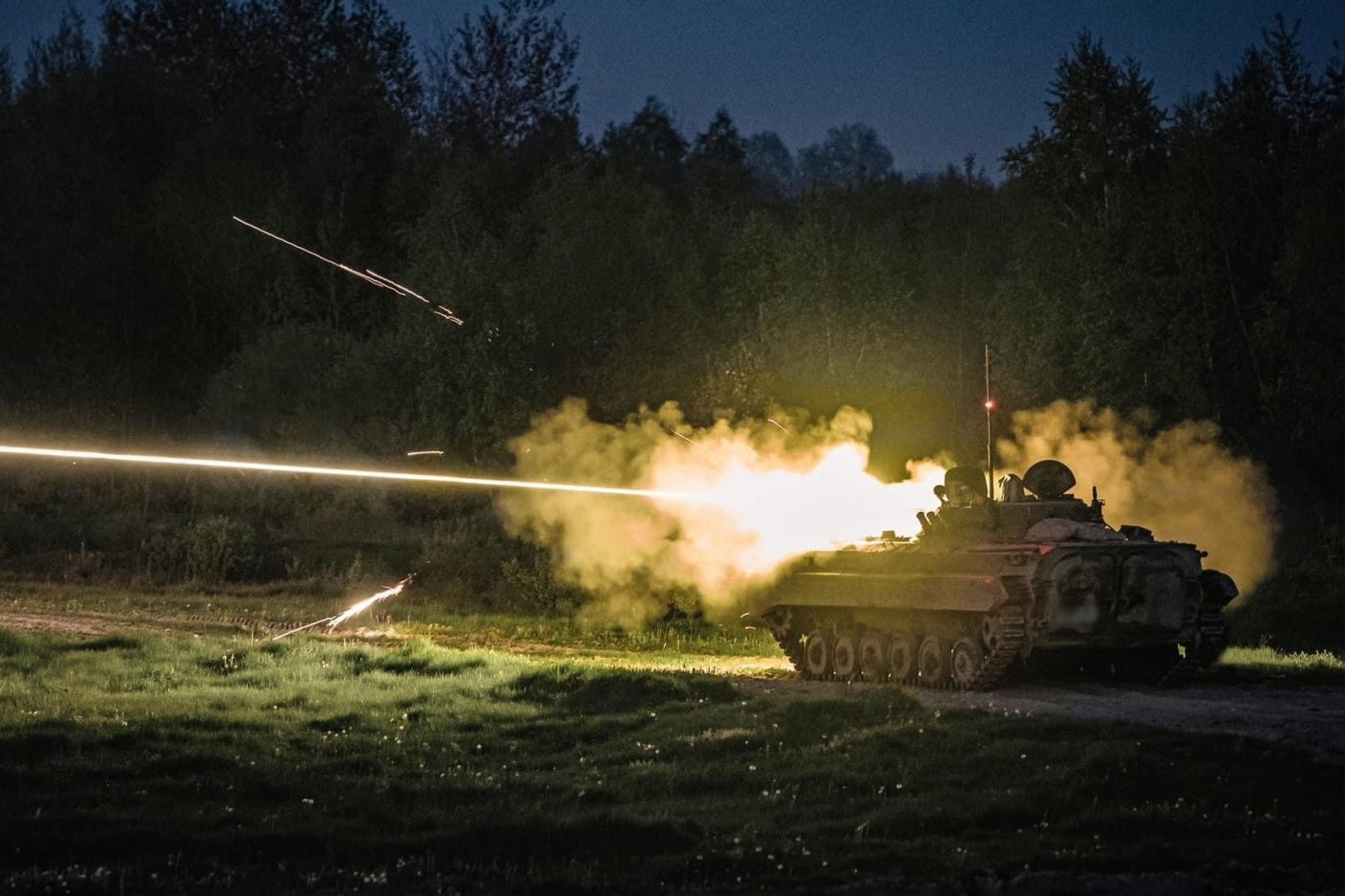The Bradleys are burning.
Images of destroyed Western-supplied armor seem to have sparked fears that Ukraine’s much-anticipated counteroffensive is flaming out. And indeed it is dismaying to see videos purportedly showing Russian troops inspecting destroyed American- and German-made vehicles.
Yet the mystery isn’t that Ukraine’s best troops are taking losses. It’s why anyone is surprised.
Some Western media reports shift between the trivial and the farcical. One article proclaimed that Ukraine had lost half of its Finnish-supplied mine plow tanks. But Finland had only sent six modified Leopard 2R vehicles: losing three out of Ukraine’s estimated 800 tanks is hardly the death knell of Ukrainian armor. Russian media claimed that a Leopard 2 had been destroyed: it turned out to be a farm tractor.
Nonetheless, there have been losses. Ukraine may have lost at least 16 of its 109 U.S.-made M2 Bradley infantry fighting vehicles, as well as four Leopard 2 main battle tanks and the three Leopard mine plows, according to the now widely respected Oryx website, which catalogs losses in the Russo-Ukraine war using open source imagery. Videos showed several Bradleys and a Leopard 2 destroyed or abandoned during a Ukrainian attack that bogged down in a Russian minefield, before being slammed by an artillery barrage. (For reference, Oryx says Russia has lost more than 10,000 vehicles since its all-out war began, including 2,027 tanks.)
It’s not that these losses are excessive in themselves. Attacking fortified lines studded with minefields and dragon’s teeth, and backed by artillery and anti-tank weapons, was bound to be a bloody proposition. Because Western-supplied vehicles are concentrated in the 12 new mechanized brigades that are at the cutting edge of Ukraine’s offensive, these will naturally be the first to suffer damage. Not to mention that Russia will deliberately target them just for the propaganda value, including by offering bounties.
Ironically, one problem is that Ukraine may be a victim of its own success in the information war. Kyiv’s spin on the conflict – clever Ukrainians outwitting the clumsy hordes of Russian “orcs” — tends to dominate Western news and social media. Though Ukrainian troops probably know better, the Western public may have hopes of a Russian collapse, just as the Arab armies collapsed during the Israeli onslaught in the 1967 Six-Day War.
Such thinking isn’t totally wishful. Relying on suicide troops and mercenaries is a sign of Russian weakness. And based on the Nazi blitzkriegs, Arab-Israeli wars and the First Gulf War of 1991, a well-equipped and well-trained army using agile combined arms tactics can win at minimal cost.
But it is wishful thinking to imagine Putin’s military is as poor as Saddam Hussein’s. Though Putin’s fantasy of himself as a new Peter the Great has been shattered, Russia remains a nation capable of building hypersonic missiles, jet fighters, and tanks — and whose history includes defeating Hitler and Napoleon. As in those conflicts, Russia doesn’t have to win all or even most battles. Instead, Russia needs to do what Russia does best: use numbers, geography — and an utter disregard for the lives of its own citizens — to inflict sufficient losses to stop the Ukrainian offensive and create a war of attrition that Ukraine can’t win.
It’s unreasonable to expect the Ukrainian military to replicate the US victory in Desert Storm. Though brave and resourceful, Ukraine’s army is hastily transitioning from a Soviet-style to a Western-style way of war. It is akin to building an aircraft after take-off. And it’s doing this while attempting to penetrate multiple defensive lines manned by a foe superior in the quantity of manpower, armor, artillery, and airpower. For example, that failed Bradley attack looks exactly what might happen to troops using unfamiliar equipment and tactics.
Contributing to the problem is a strange perception that Western armor is somehow invulnerable. In fact, Abrams tanks were destroyed in Desert Storm, as were Leopard 2s in Syria. For the most part, this can be blamed on poor tactics or even friendly fire (the same also be said of Russian tank losses in Ukraine). Either way, blunder into a minefield as Ukrainian armor did, and even the biggest armored behemoth will be reduced to flaming wreckage.
Perhaps the real fear isn’t that Ukraine is losing its best weapons, but rather that these weapons can’t be replaced. Nations that wage mechanized warfare either enjoy a big defense manufacturing base, as the US does. Or they rely on a patron for replacements, as Israel does with America.
Ukraine does not have the resources to build large numbers of complex weapons such as tanks. But it can’t rely on its allies. especially in Europe. NATO’s belated and chaotic resupply effort hasn’t just been hampered by political timidity: there simply are no vast stockpiles of munitions and production capacity left after the post-Cold War drawdown, particularly in Europe.
Ultimately, the issue isn’t simply counting losses. If losing a few Bradleys was the price of achieving a strategic goal such as isolating the Russian-held Crimean peninsula, that would be a bargain. (and anyway, both the US and Germany have pledged more tanks and armored vehicles to compensate for battlefield losses.) What Ukraine can’t afford is to waste its Western armor to merely recapture a few villages.
It needs to master its new Western equipment. And that means an expensive learning curve. A few destroyed Bradleys can be expected from a first battle. Let’s see how Ukraine does in the next one.
Michael Peck is a defense writer. He can be found on Twitter and LinkedIn.
Europe’s Edge is CEPA’s online journal covering critical topics on the foreign policy docket across Europe and North America. All opinions are those of the author and do not necessarily represent the position or views of the institutions they represent or the Center for European Policy Analysis.





